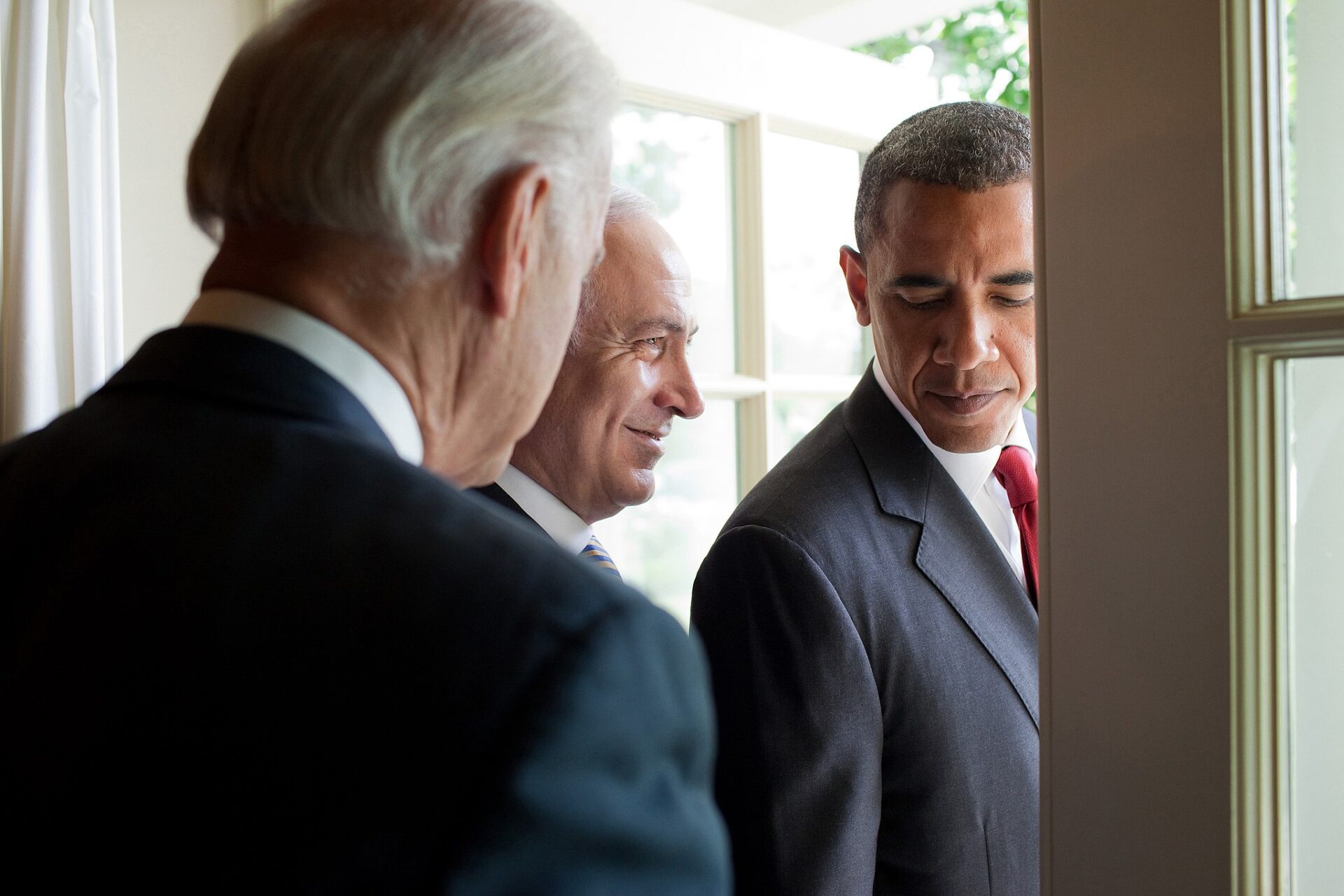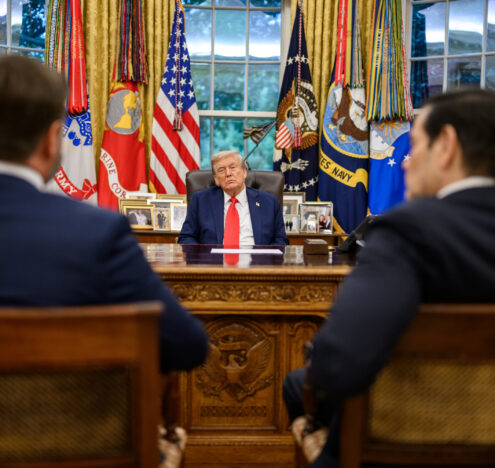Israel and Iran recently exchanged direct fire on each other’s sovereign territories, marking a historic escalation between the two regional rivals at a time of intense instability in West Asia. While the latest Israeli strike on Iran’s central city of Isfahan on April 19 could be an attempt to de-escalate while saving face, the risk of a broader regional war with global implications remains unacceptably high. Fighting in Gaza and renewed strikes on US military positions in Syria harm the prospect of mitigating this risk, highlighting that the best solution to prevent a conflict is an Israel-Hamas ceasefire.
Indeed, Gaza is driving fighting along multiple fronts in what can be described as a regional conflict short of full-blown war. Following an illegal Israeli strike on the Iranian diplomatic compound in Damascus on April 1, Tehran conducted a significant, coordinated attack at Israel proper on April 13 for the first time in their long-running rivalry, launching upwards of 350 rockets, drones, and ballistic missiles at military compounds supposedly responsible for the attack. This led to the April 19 strikes on Isfahan and other parts of the region. Iranian militias likely conducted the later strikes on US positions.
To be sure, the incidents following the Israeli strike on Damascus appear to be calculated to inflict a level of harm short of spurring total war — reflecting strong deterrence considerations. Iranian officials say they warned multiple countries of a pending attack following April 1 in an apparent attempt to allow regional actors and the United States the ability to counter its actions. Similarly, Israel telegraphed vague language in response to that attack amid widespread condemnation of Iran and calls for Israel to “take the win,” according to a call between US President Joe Biden and Israeli Prime Minister Benjamin Netanyahu.
Rewriting Deterrence Rules
This suggests Tel Aviv and Tehran are trying to save face while rewriting the region’s deterrence rules that shattered after Hamas’s Oct. 7 attack on Israel. Meanwhile, world powers aligned with these states, as well as regional actors, appear focused on preventing an unstoppable escalatory spiral — as Saudi Arabia and Jordan’s rare involvement in efforts to counter Iran’s April 13 attack on Israel suggests. Ironically, long-term foes across West Asia are coming closer together because of regional instability when, historically, that was not the case.
Yet while efforts to avoid a broader regional conflict are notable and historic, they could fall flat. For example, well-meaning US diplomacy to encourage countries with influence to communicate messages of restraint to both Israel and Iran is necessary. But it ultimately fails to address the root causes of the conflict, depending on cooler heads to prevail in a region notorious for the opposite. Such an approach manages the conflict instead of taking the bold political steps necessary to ensure relative peace and stability.
Indeed, with conservative hardliners running the Israeli and Iranian governments, saber rattling is now the norm — with potentially disastrous results. Heightened rhetoric demanding shows of strength must be taken seriously given elements in both countries prefer a conflict with their greatest foe. One misunderstanding of that rhetoric — or the historically abysmal relations between the two countries — could constitute the irreversible step that engulfs the region in flames. Unfortunately, many wars do not start intentionally, but rather due to political games running amok — something currently underway in the region.
Hawks in Both Countries
In this context, understanding the domestic considerations in both countries is crucial. For Israel, Netanyahu has incentive to prolong the fighting — possibly short of full-blown war — to avoid losing his governing coalition that demands hawkish actions but could protect him from corruption trials. In this regard, far-right parties hold Bibi hostage, although this does not excuse the ideological underpinnings driving his thinking during the war or engagements with Iran and the Axis of Resistance.
That hawkish political fringes dominate their respective countries’ governments should raise red flags for the international community.
For Iran, the first leadership transition in decades is rapidly approaching as Supreme Leader Seyyad Ali Khamenei is 85 years old with regular health issues. Conservatives and ultranationalists have largely succeeded in boxing out political rivals — including relatively moderate conservatives. The reformist camp is largely irrelevant today after supporting engagement with the West and a less aggressive foreign policy. The ruling conservatives cannot afford a political setback that could threaten another conservative hardliner shot at becoming the Supreme Leader, believing they must stand strong. Some believe Raisi is a leading candidate in this regard.
That hawkish political fringes dominate their respective countries’ governments should raise red flags for the international community. Revolutionary governments like Iran have a long history of aggressive foreign policies — including and particularly that of revolutionary France and its coalition wars. Meanwhile, the United States and its expansion across North America reflect Israel’s Zionist ideological roots and an expansionist character, presenting the same threat in a different form. Ultimately, both powers are expansionist and externalize their security at risk of broader conflict, albeit in slightly different ways.
Another Path Needed
Thus, aggressive diplomacy attaching real consequences to actions is necessary to cool the regional temperature today. But this is strictly a reactionary approach, especially judging renewed strikes on US military positions in the region after efforts to de-escalate. A ceasefire in Gaza and eventual solution to the Israel-Palestine conflict is more important than ever as it sits at the core of multiple regional problems driving instability. The region must be presented with another pragmatic path — one of genuine peace and dialogue for all parties — which makes the US veto of Palestine’s UN application on April 18 all the more upsetting.
US leaders could finally opt to present another path if they truly believed in this approach, especially for Palestinians who see no other way to achieve their wishes for a state than violence. Rather, Washington continues to lean into regional security deals excluding Iran and other actors like the Palestinians, hardening competing blocs and creating new problems while further entrenching its own military and security interests into regional affairs. This strategy failed — miserably — as it ignored the Palestinians and disregarded Iran’s real or perceived security concerns in the process.
As such, today’s region is closer to what would be the worst war in human history than it has ever been. The world is reaping the results.




















